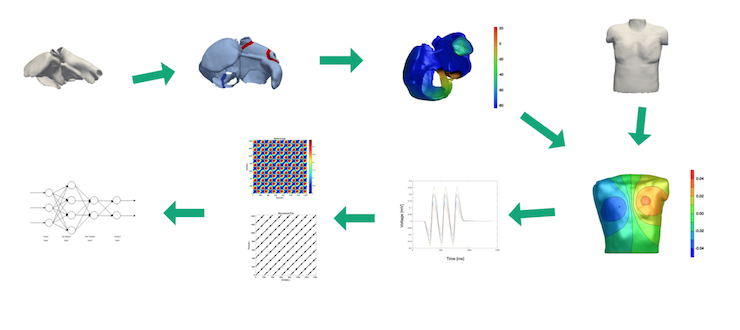Atrial Fibrillation (AF) is the most frequent cardiac disease in humans. It often leads to severe complications such as heart failure and stroke. For this reason, it is essential to identify and recognize this condition, so that it can be promptly treated.
Nowadays, to be able to identify with greater precision what type of AF the subject is affected, invasive methods of signal acquisition must be used, such as the use of intracardiac catheters. It would be best to try to identify with more precision the type of AF, the location of the AF source and other information, using non-invasive methods, such as 12-lead-ECG and Body Surface Potential Map (BSPM), in order to avoid the use of invasive methods or in any case to decrease the procedure time of the ablation therapy.
The aims of this work will be:
- To understand the relationship between various patterns of depolarization in the atria during Sinus Rhythm, Atrial Flutter and Atrial Fibrillation and the corresponding 12-lead ECG and BSPM.
- To understand which of the atrial depolarization patterns can be detected, identified or localized reliably based on BSPMs and in a 12-lead-ECG.
To achieve these aims a multidisciplinary approach is needed, passing through cardio modelling, signal processing, statics and machine learning.


